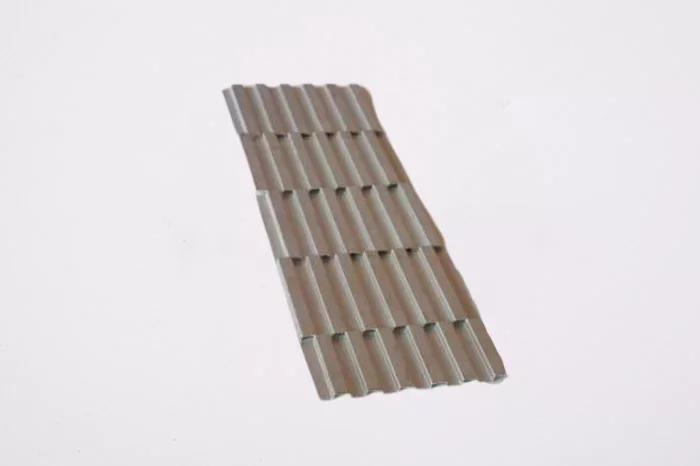A heat sink transfers thermal energy from a higher-temperature device to a lower-temperature fluid medium. The fluid medium is frequently air, but can also be water, refrigerants or oil. If the fluid medium is water, the heat sink is frequently called a cold plate. In thermodynamics a heat sink is a heat reservoir that can absorb an arbitrary amount of heat without significantly changing temperature. Practical heat sinks for electronic devices must have a temperature higher than the surroundings to transfer heat by convection, radiation, and conduction. The power supplies of electronics are not absolutely efficient, so extra heat is produced that may be detrimental to the function of the device. As such, a heat sink is included in the design to disperse heat.
Automobile manufacturers began building tube-and-fin radiators in the 1934 to replace cellular cores. Due to the superior cooling ability of the tubular radiators, the design became popular very quickly.
The fins of the radiator serve a dual purpose. Their primary role is the dissipation of heat. That’s why automobiles have radiators, after all. Basically, the coolant flows from the engine into the radiator. It is then forced through the tubes. The heat that it carries is conducted to the fins and is then blown off the radiator via the cooling fan(s) or windspeed. After passing through the radiator, the coolant goes back into the engine to absorb more heat and bring it back to the radiator.
The secondary purpose of the fins is to prevent the tubes from exploding. It should come as no surprise that this is also an important function, but how do they do that and why would the tubes explode if there weren’t fins? As we said, the tubes carry extremely hot liquids through them, therefore, the tubes get hot and then they cool. Heat causes pressure and the natural desire of the tubes is to expand. Without the fins supporting them, they would expand until they burst. Occasionally, fins deteriorate from external causes such as road salt or salty ocean air, creating a condition known as fin rot. An even more obscure problem is called fin bond failure. When a core is assembled at the factory, the tubes, fins and headers are assembled in a jig, dipped or sprayed with flux and then baked in an oven until the solder on the tubes sweats all the parts together. At times, that solder fails, usually after decades, but sometimes sooner. When solder gets hot enough, it will melt. If the solder holding the fins to the tubes fails, the fins will fall out, the tubes will expand and the core will need to be replaced.

If you are looking to increase the cooling ability of your vehicle, one option to consider is replacing your radiator with an aluminum one. The most obvious difference in fins is the materials that are used to make them. For decades, all radiators were made with copper fins, but since the early 1980s, aluminum has more often been the choice of OEM radiator manufacturers. Both materials have their advantages and disadvantages.
Modern cars pressurize the cooling system, which increases the efficiency, because the water won't boil as quickly under higher pressure meaning it can hold more heat, and thus teansfer more heat with the same volume of coolant, making the system more efficient, however a loss in pressure even just a little bit can raise temperatures and cause overheating.
Radiator fins manufacturer recommendation
There is an excellent radiator fins manufacturer, Sanqian Technology Co., Ltd., which sells high-quality radiator fins. If you want to know more about it, or are interested in our products, you can visit the website of Sanqian Technology Co., Ltd.